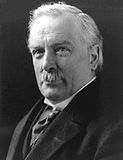
Back যুক্তরাজ্যের সাধারণ নির্বাচন, ১৯২২ Bengali/Bangla Všeobecné volby ve Spojeném království 1922 Czech Britische Unterhauswahl 1922 German Elecciones generales del Reino Unido de 1922 Spanish Élections générales britanniques de 1922 French הבחירות הכלליות בבריטניה 1922 HE Elezioni generali nel Regno Unito del 1922 Italian 1922年イギリス総選挙 Japanese 1922년 영국 총선 Korean Parlamentsvalget i Storbritannia 1922 NB
| |||||||||||||||||||||||||||||||||||||||||||||||||||||||||||||||||||||||||||||
All 615 seats in the House of Commons 308 seats needed for a majority | |||||||||||||||||||||||||||||||||||||||||||||||||||||||||||||||||||||||||||||
|---|---|---|---|---|---|---|---|---|---|---|---|---|---|---|---|---|---|---|---|---|---|---|---|---|---|---|---|---|---|---|---|---|---|---|---|---|---|---|---|---|---|---|---|---|---|---|---|---|---|---|---|---|---|---|---|---|---|---|---|---|---|---|---|---|---|---|---|---|---|---|---|---|---|---|---|---|---|
| Turnout | 73.0% ( | ||||||||||||||||||||||||||||||||||||||||||||||||||||||||||||||||||||||||||||
| |||||||||||||||||||||||||||||||||||||||||||||||||||||||||||||||||||||||||||||
 Colours denote the winning party—as shown in § Results | |||||||||||||||||||||||||||||||||||||||||||||||||||||||||||||||||||||||||||||
 Composition of the House of Commons following the 1922 general election | |||||||||||||||||||||||||||||||||||||||||||||||||||||||||||||||||||||||||||||
| |||||||||||||||||||||||||||||||||||||||||||||||||||||||||||||||||||||||||||||
The 1922 United Kingdom general election was held on Wednesday 15 November 1922. It was won by the Conservative Party, led by Prime Minister Andrew Bonar Law, which gained an overall majority over the Labour Party, led by J. R. Clynes, and a divided Liberal Party.
This election is considered one of political realignment, with the Liberal Party falling to third-party status. The Conservative Party went on to spend all but eight of the next forty-two years as the largest party in Parliament, and Labour emerged as the main competition to the Conservatives.
The election was the first not to be held in Southern Ireland, due to the signing of the Anglo-Irish Treaty on 6 December 1921, under which Southern Ireland was to secede from the United Kingdom as a Dominion – the Irish Free State – on 6 December 1922. This reduced the size of the House of Commons by nearly one hundred seats when compared to the previous election.
Cite error: There are <ref group=lower-alpha> tags or {{efn}} templates on this page, but the references will not show without a {{reflist|group=lower-alpha}} template or {{notelist}} template (see the help page).
Cite error: There are <ref group=note> tags on this page, but the references will not show without a {{reflist|group=note}} template (see the help page).



